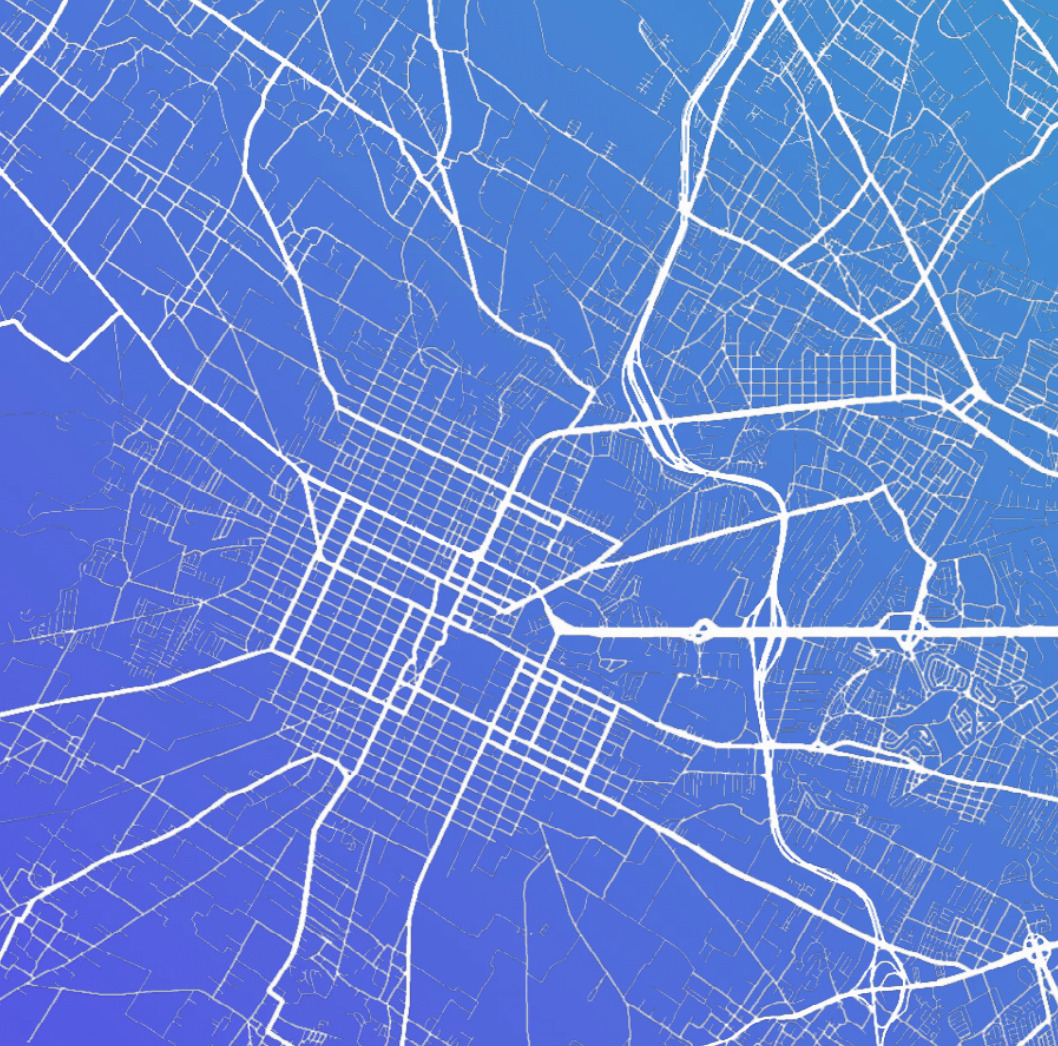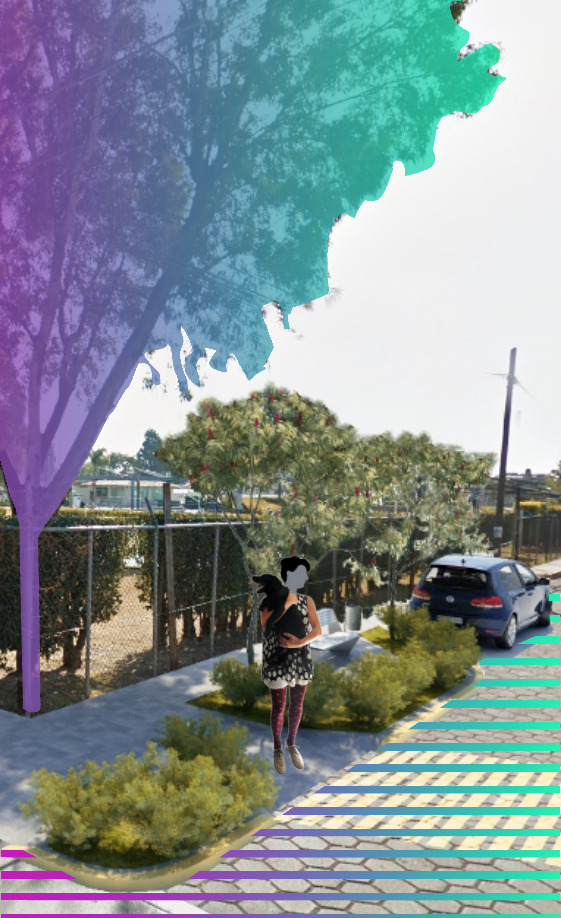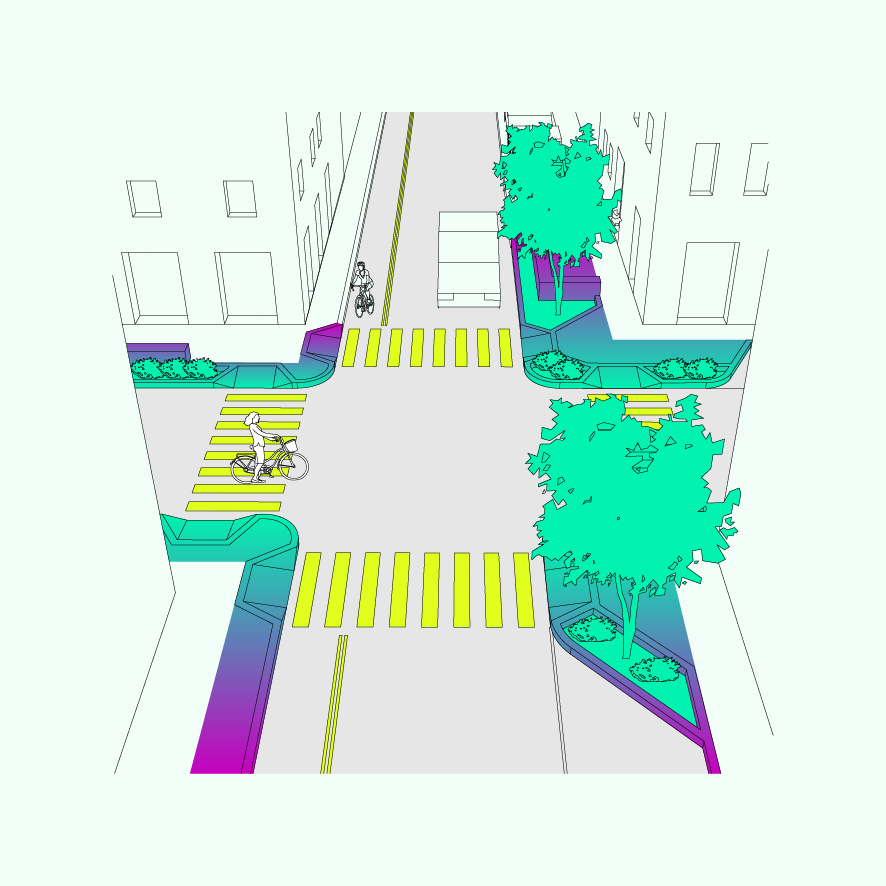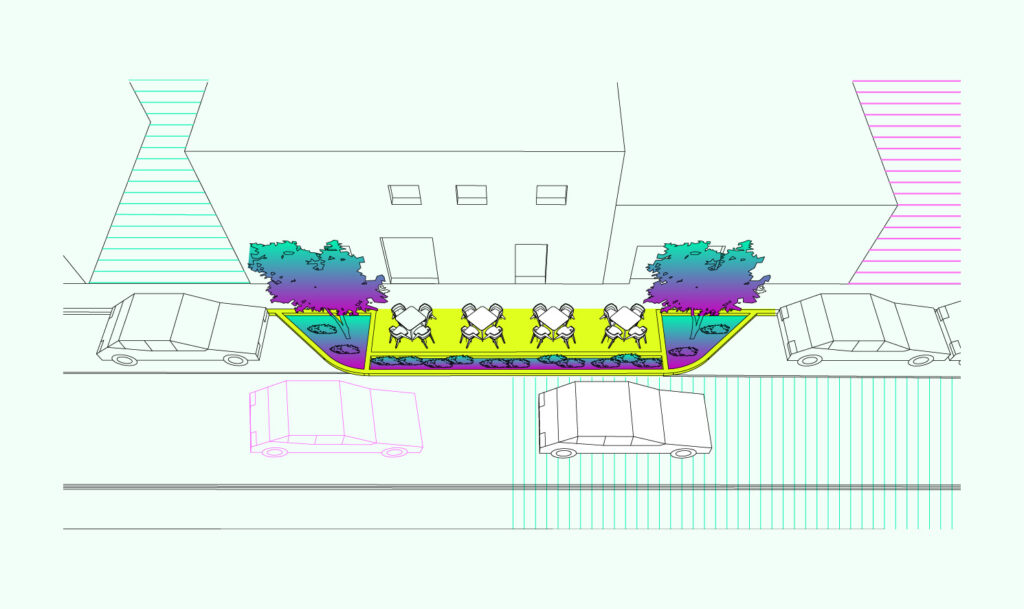
PROBLEMATIC
The streets of the traditional Mexican neighborhoods used to be gathering points where the neighbors could gather to gossip about the latest happenings, where the kids could play on their bikes, and even where local religious or parties would take place.
Unfortunately, that has changed: cars have appropriated the streets, making it unsafe and even dangerous to walk from one point to another, the urban fitting has become decadent, consequently, life has relocated towards the interior. Walls and fences have appeared as witnesses of the delinquency and social segregation that little by little degrade these former social spaces.
OBJECTIVE
In Cafeina, we are convinced that an adequate urban design can generate a positive impact in its context. Therefore, our main objective for this project was to repurpose the streets so we can recover the human scale through the implementation of strategies so the streets can be again places where the people can enjoy experiences and make a community.
Consequently, the main idea of the intervention is to recover the streets for the people so they can be once again places for the communities and stop the vicious circle of degradation and segregation that has transformed the neighborhood, remaining aware of the needs of vehicular mobility.

Our proposal.
Street 8 Norte is an urban axis that connects the millenary archeological pyramid of Cholula, with the newest commercial area in town, traversing a traditional neighborhood that merges from a traditional colonial site into an area with new real estate developments, which provide a context without a self-identity or a specific sense of place.
To reverse this vicious circle 4 design principles were implemented:

1
STREETS FOR THE PEDESTRIANS

2
ENCOURAGE BICYCLES

3
RESTORE AND REDESIGN NEW PLAZAS

4
URBAN REFORESTATION
Such design principles intend to discourage the use of motorized vehicles so streets and plazas can become again a meeting point for the neighborhood inhabitants, promoting a more livable, safer, easy to transit, colorful, vegetated, with identity and places that promote social integration so people can enjoy. Such interventions are relatively simple, but we believe they produce a considerable impact in the community.

